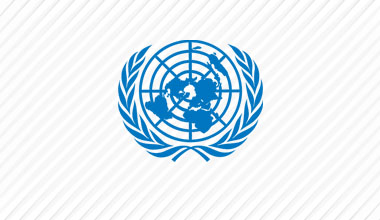TIMOR-LESTE: Chronic malnutrition among world's highest
Tibar, 25 February 2011 (IRIN) - For the past eight years, the same three have topped a UN ranking of the countries with the highest percentage of chronically malnourished children: Afghanistan (59 percent), Yemen (58 percent), and the Southeast Asian half-island nation bordering Indonesia, Timor-Leste (54 percent).
"Chronic malnutrition [stunting] is an inter-generational problem that does not have quick fixes, meaning it cannot change within a few years... Stunting is a slow burning crisis that evolves over time," said Monjur Hossain, UNICEF's head of health and nutrition in Timor-Leste.
While there are "quick fixes with low hanging fruits like immunization, oral rehydration solution [ORS] and Vitamin A supplementation" that can reduce child mortality, these do not address the perennial challenge of improving nutrition, Hossain added.
Silent epidemic
Julieta Soares, 26, a Timorese mother of six, said her family ate what they could grow or afford in the fishing village of Tibar, 5km outside the capital, Dili. "We never think about our food each day. The important thing for us is to find something that can fill our stomachs, whether it is rice, cassava, corn, or bananas."
Her family's diet rarely contains meat, eggs or dairy products, because of the cost, but her priority is to avoid hunger: "Just as long as we do not starve."
Only 5 percent of 4,691 mothers questioned in a 2009-2010 government survey reported drinking milk the day before the interview. Lucinda Baptista, 39, a mother of six, said milk was unaffordable, while Soares said: "Milk is a rare item for us."
|
Nutrition in numbers
|
|
|
Under-five children with anaemia
|
38.8%
|
|
Women with anaemia
|
21.9%
|
|
Acutely malnourished under-five children
|
18.6%
|
|
Chronically malnourished under-five children
|
58.0%
|
|
Under six-month old babies exclusively breastfed
|
52.0 %
|
|
Babies stunted at birth
|
64.7%
|
|
Babies acutely malnourished at birth
|
21.0%
|
|
Pregnant women with BMI less than 18.5 (thin)
|
64.5%
|
|
Women overall with BMI less than 18.5
|
27.1%
|
|
Children who consumed vitamin A rich foods in previous 24 hours
|
79.2%
|
|
Children who received de-worming treatment in previous six months
|
35%
|
|
Pregnant women who took no iron supplements for most recent pregnancy
|
37%
|
|
Source: 2009-2010 Demographic and Health Survey
|
|
While a government nutrition strategy has been in place since 2004, only in 2008 did the country develop nutrition interventions, including monthly community malnutrition screenings and door-to-door community outreach by nutrition workers.
Neither mother had taken their children recently to "puskemas" community health centres, which nutrition officer Hossain said was no surprise.
"To be thin and small is perceived to be the norm; it [chronic malnutrition] is not perceived as a problem... We are talking about an inter-generational chronic and silent epidemic of malnutrition [stunting] as well as [a 2009-2010 national average of] 18.6 percent acute malnutrition [wasting]."
Lack of life-saving micronutrients is the top cause of preventable mental disability, and chronic malnutrition - most commonly measured by a child's height in relation to age - increases the risk of premature death and irreversible mental and physical disability, according to the World Health Organization.
Food variety
In a 2009-2010 survey conducted by World Vision, only 4 percent of surveyed households in Alieu district bordering Dili regularly consumed a variety of food that included protein, dairy, vegetables and fruit, breads and cereals as well as fat and sugar.
In the western border district of Bobonaro, 18.8 percent managed to consume as many food groups, but another 66 percent of the population reported difficulties obtaining any food in the previous 30 days.
This district also had the country's highest rate of stunting, 73 percent, according to the government's 2009-2010 Demographic and Health Survey.
Neighbouring Ermera district reported 68 percent stunting and 20 percent acutely malnourished children (underweight for their height), which can be explained by the district's lack of access to food and residents' beliefs, said Hossain.
"There are some food taboos, [such as] they don't prefer to eat nutritious foods like eggs and [have] a low intake of food during pregnancy [for fear of dying in childbirth due to large babies]."
Interventions
Local NGO Alola Foundation has established volunteer mother support groups in at least nine of 13 districts nationwide to promote exclusive breastfeeding for at least six months of a baby's life.
International NGO Helen Keller International and UNICEF are experimenting with micronutrient powders for children younger than two in Alieu district, with plans for a nationwide roll-out based on results in Alieu.
Concern Worldwide offers community-based treatments for acute malnutrition in all 13 districts, including social mobilization, out-patient management, supplementary feedings and in-patient care.
The Health Ministry conducts monthly nutrition screenings at designated sites.
But any interventions will take time to bear results, said Hossain. "[This] can require up to a generation, such as improving adolescents' and women's nutrition in order to improve her baby's chances of not being stunted."
Source: IRIN News http://irinnews.org/Report.aspx?ReportID=92039
********
 UN
UN United Nations Peacekeeping
United Nations Peacekeeping




